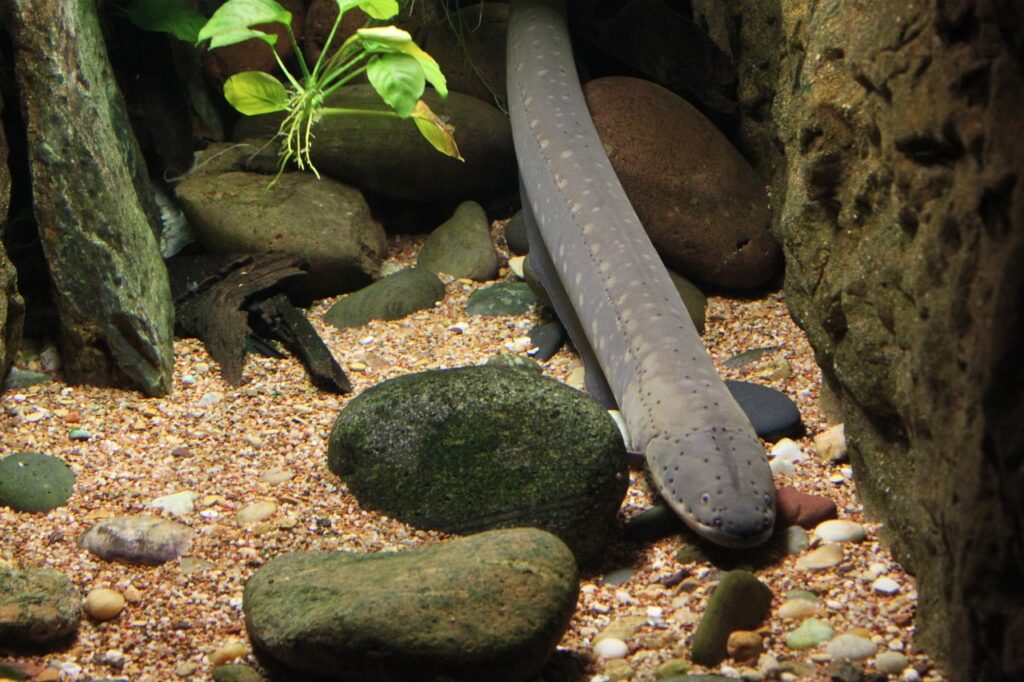After centuries of speculation, scientists have finally cracked one of the most enduring mysteries in the animal kingdom: how eels reproduce. Despite having been to the moon and exploring the deep seas, the reproductive process of eels has baffled researchers for millennia. Thanks to recent discoveries, we now have a clearer understanding of this elusive species’ life cycle. In this article, we dive deep into how eels reproduce, the challenges researchers faced, and the exciting new revelations that have emerged.

Understanding the Eel Reproduction Mystery
For years, the process of how eels reproduce remained a mystery. Eels, particularly the European eel (Anguilla anguilla), have a unique life cycle that begins in freshwater rivers and estuaries, but they migrate thousands of kilometers to the Sargasso Sea to breed. Despite the progress in biology, scientists were left scratching their heads, as no one had ever seen eels reproduce in the wild. Dissecting them offered no clues either, as eels were found without sexual organs in many cases. The discovery of their reproductive organs during their migration is just one piece of the intricate puzzle.
The Role of Hormones in Captivity
In captivity, scientists discovered that European eels could be brought to sexual maturity through hormone treatments. This allows them to reproduce, offering controlled insight into their reproductive behavior. However, the challenge remained to understand do eels have reproductive organs naturally in the wild. These hormone treatments are unable to mimic the natural processes that occur when eels reach their breeding grounds.
The Sargasso Sea: The Eel Breeding Ground
For decades, scientists theorized that eels reproduce in the Sargasso Sea, a region of the North Atlantic Ocean bordered by four major ocean currents. Although eel larvae were found in the area, no adult eels or eggs had ever been discovered. That all changed with a groundbreaking study that finally tracked the migration of European eels to their breeding grounds in the Sargasso Sea, marking the first direct evidence of their reproductive journey.
The First Eel Larvae Discovery
In the 1920s, Danish biologist Johannes Schmidt made a pivotal discovery when he found eel larvae in the Sargasso Sea. This discovery set off a century of research dedicated to understanding where do eels reproduce. Despite this early finding, the exact location of the breeding grounds remained a mystery, and the declining population of European eels added urgency to solving this puzzle. Habitat loss, pollution, and overfishing compounded the difficulty of tracking eels and understanding their reproductive habits.
Recent Breakthrough: Satellite-Tracked Migration
A recent breakthrough in eel research came when scientists equipped 21 female European eels with satellite tags and tracked their migration to the Sargasso Sea. This technology provided the first direct data on their migration patterns, offering valuable insights into do eels reproduce in captivity in the wild. The researchers found that eels travel up to 6,210 miles (10,000 kilometers) to reach their breeding grounds, a remarkable feat for such small creatures.
The satellite data revealed that some eels made it all the way to the eel breeding, while others were tracked along their do eels reproduce in captivity. This information helps scientists understand the challenges eels face during migration and offers new opportunities for conservation efforts to protect these vulnerable creatures.
The Challenges Eels Face During Migration
The journey to the Sargasso Sea is fraught with challenges. Eels must navigate weirs, dams, and other obstacles in their freshwater habitats before embarking on the long trek across the Atlantic Ocean. They also face threats from predators, pollution, and human activities such as fishing. Understanding eels reproductive organs is key to addressing these threats and developing conservation strategies that can help boost their dwindling populations.
One of the most intriguing aspects of eel migration is their ability to dive to depths of over 1,000 meters (3,280 feet) during their journey. This deep dive into darkness is believed to conserve energy and protect them from predators, allowing them to complete their long migration and successfully reproduce.
The Importance of Conservation Efforts
As researchers continue to unravel the mystery of how eels reproduce, it’s clear that conservation efforts are critical to ensuring their survival. European eels have experienced a dramatic population decline since the 1980s, with some estimates suggesting a drop of over 90%. Habitat loss, overfishing, and climate change all play a role in this decline, making it more important than ever to protect these fascinating creatures and their unique reproductive journey.
Unanswered Questions About Eel Reproduction
Despite recent breakthroughs, there are still many unanswered questions about how do eels reproduce. For instance, scientists are still unsure how eels navigate the vast expanse of the Atlantic Ocean to reach the Sargasso Sea. Some researchers believe that eels use the Earth’s magnetic field to guide them, similar to how certain species of salmon return to their spawning grounds. Others suggest that eels may rely on olfactory cues or ocean currents to find their way. Further research will be needed to fully understand these mechanisms.
The Future of Eel Research
With new technology and an increased focus on conservation, scientists are optimistic about the future of eel research. The satellite tracking data gathered from recent studies offers valuable insights that can help guide conservation efforts and protect these vulnerable species. Additionally, continued research into how eels reproduce could provide solutions to the many challenges facing European eels today, from habitat loss to pollution and climate change.
Conclusion: Cracking the Code on Eel Reproduction
The mystery of eels mating has captivated scientists for centuries, and recent breakthroughs have brought us closer than ever to fully understanding this complex process. With continued research and conservation efforts, there is hope that we can protect these remarkable creatures and ensure their survival for generations to come.











Latest Posts
Introduction: Makeiva Albritten’s Unforgettable Legacy
How To Relieve Stress: 5 Simple And Effective Ways
Election 2024 Date: Key Details and What to Expect